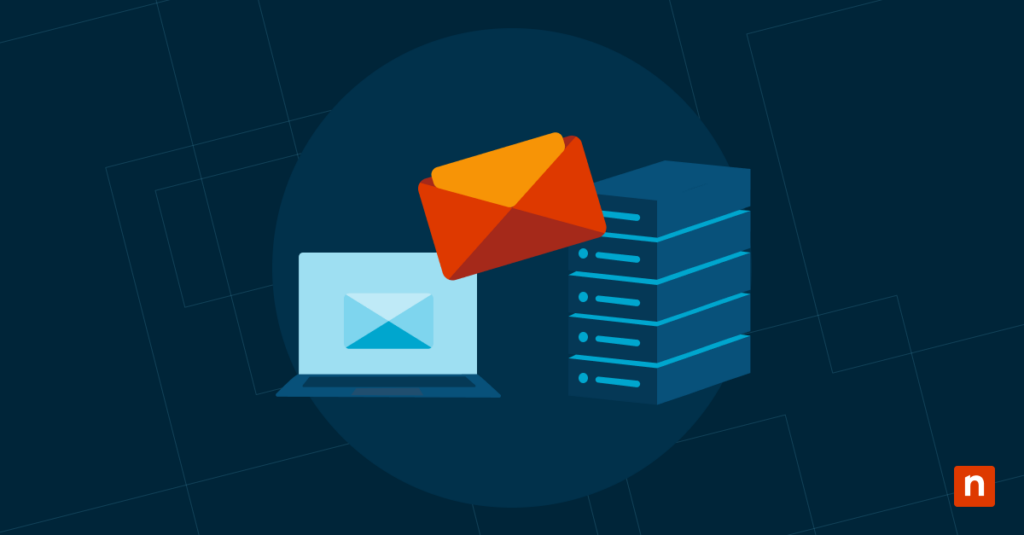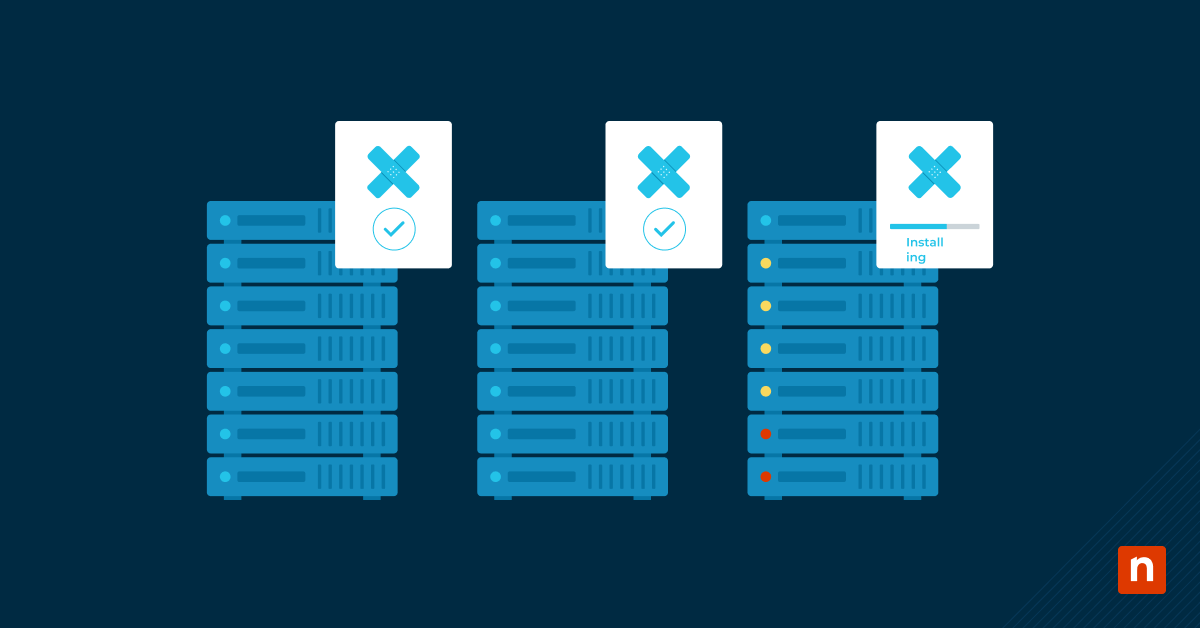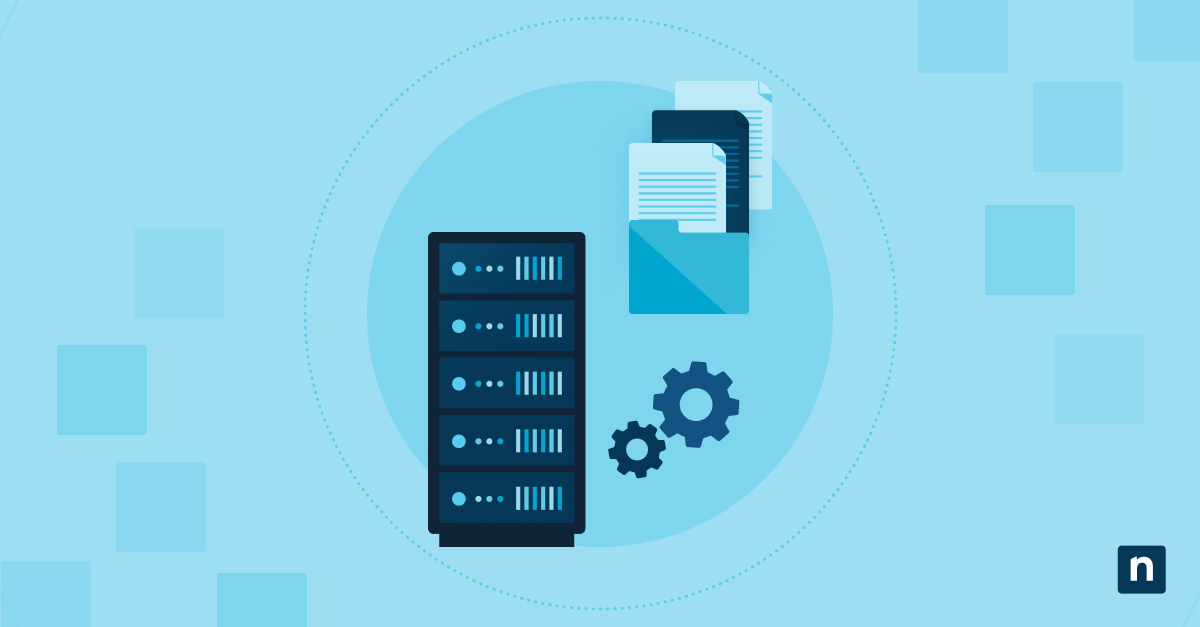Setting up a secure email server for your business ensures efficient communication and data security. Having your own email server gives you control over your email infrastructure and the ability to customize it to meet your specific needs. In this guide, we will go over each step when it comes to how to set up an email server for your business.
Why you should set up secure email servers for your business
While it’s important to set up an email server for your business for several reasons, the main reason is security. Relying on third-party email services leaves you at the mercy of their security measures.
When you set up your own email server for your organization, you have the ability to implement robust email server security best practices to protect your email server and data. A secure email server allows you to have complete control over your data, reducing the risk of unauthorized access or data breaches.
Additionally, you might set up an email server to gain greater flexibility and customization. You can configure your email server to suit your business needs, integrate it with your existing infrastructure, or implement specialized features. This greater level of control aligns your efficient email communication system with your business objectives.
How do I set up a local email server?
Here are the basic steps to set up an email server for your business:
- Plan your email server setup by defining your expected volume of email traffic, number of users, budget, and management plan.
- Consider the storage capacity, processing power, and scalability you’ll need for your expected email traffic, and select hardware that can handle the demands.
- Analyze each software option based on cost, security, compatibility with other applications like calendars or mobile apps, and features such as archiving and storage. Install and configure the software according to the provided instructions.
- Set up domain and user accounts, configure your email server to recognize your business domain, and create user accounts for employees, ensuring they have the necessary permissions and access levels.
- Configure email client software such as Microsoft Outlook or Mozilla Thunderbird to connect to your server.
- Implement robust security measures to protect your email server and data. Enable encryption protocols such as SSL/TLS to secure email transmissions and implement strong password policies. Consider adding additional layers of security, such as multi-factor authentication.
- Perform regular, ongoing maintenance and monitoring tasks such as software updates, backups, and security audits. Monitor the server for any unusual activities or performance issues to ensure its smooth operation.
Configuring your secure email server
Configuring your secure email server involves making specific settings and adjustments to ensure optimal performance and security. Some essential configurations to consider include:
- Secure authentication—Enable secure authentication methods such as SSL/TLS and implement strong password policies to prevent unauthorized access to your email server.
- SPF, DKIM, and DMARC—Implement protocols like SPF (Sender Policy Framework), DKIM (DomainKeys Identified Mail), and DMARC (Domain-based Message Authentication, Reporting, and Conformance) to authenticate and protect your outgoing email messages from being spoofed or tampered with.
- Anti-spam and anti-malware—Use robust anti-spam and anti-malware filters to protect your organization from malicious emails and potential threats.
- Data encryption—Implement encryption protocols to protect the confidentiality and integrity of your email communications. Encryption ensures that even if intercepted, your emails cannot be read without the encryption key.
- Backup and disaster recovery—Perform regular backups of your email server to ensure you have a copy of your data in case of hardware failure or other disasters. Remember to test the backup restoration process to verify its effectiveness.
Best practices for secure email server setup and management
After setting up and configuring your email server, the next step is to manage it in a way that ensures the security of your email data. Follow these best practices to keep your server functioning efficiently:
Update the software regularly: Keep your email server software and all related components up to date to protect against known vulnerabilities and security exploits.
Implement access controls: Restrict access to your email server by granting permissions only to authorized users, and regularly review and update access privileges as needed.
Monitor logs and audit trails: Regularly review logs and audit trails to identify any suspicious activities, potential security breaches, or performance issues. If any issues are found, take immediate action to mitigate the identified risks.
Educate employees: Train your employees on best email security practices such as recognizing phishing emails, avoiding suspicious attachments, and using strong passwords. Regularly remind them about the importance of email security and the potential risks associated with careless email practices.
Perform regular security audits: Conduct periodic security audits of your email server to identify vulnerabilities. If vulnerabilities are found, address them promptly and implement additional security measures.
Managing a secure email server requires a high level of diligence and commitment to ensure that attackers are kept out and damage is minimized if they do gain access.
Watch our video on Best Practices for Email Server Security to learn how to strengthen your server against threats.
Services and providers to set up email servers
Setting up email servers from scratch can be daunting, especially if your IT department is already stretched thin with its current duties. If you want a secure email server but don’t have the resources to take on the project yourself, consider working with email server setup services and providers. Here are some options to explore:
- Cloud-based email services—Providers like Google Workspace, Microsoft 365, and Zoho Mail offer cloud-based email services that provide secure and reliable email infrastructure without the need to set up and manage an email server.
- Managed hosting services—These providers specialize in setting up and managing email servers on your behalf. They handle the technical aspects, including hardware, software, security, and maintenance, allowing you to focus on your core business.
- Email server software with support—Some email server software providers offer support and assistance in setting up and configuring your email server. This option allows you to manage your own server while still receiving expert guidance.
Take charge of your inbox. Watch How to set up an email server for your business and enhance deliverability.
Prioritizing email security and data protection
Your decision to set up an email server for your business allows you greater control, security, and customization options for your email communications. Following the steps and best practices to set up email servers, you can ensure a secure and efficient email infrastructure that meets your business needs.
Whether you choose to set up email servers on your own or opt for assistance, make sure you prioritize security. Data encryption, secure authentication, and spam filtering ensure that your data stays safe while your email moves to its destination.








